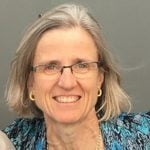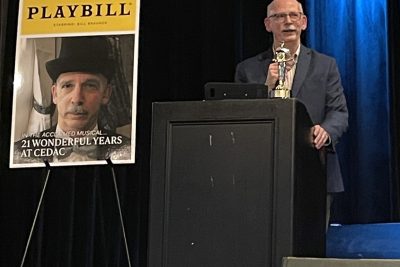At INSITES this week, we continue our series of spotlights on previous directors of the Children’s Investment Fund (“the Fund”). Today, Viki Bok, the organization’s second director, reflects on how the Fund’s role in the nonprofit child care provider community has evolved throughout the years.
- Describe your experience as the director for Children’s Investment Fund?
I worked at the Fund from 1999-2005. I had two young children of my own at the time, and the importance of ensuring an adequate supply of high-quality child care – including well-designed, beautiful facilities – was a very personal issue for me. But as I quickly learned at the Fund, most child care center directors were fighting hard simply to balance their budgets due to insufficient voucher reimbursement rates, and if they had a dime to spare, their top priority was paying their staff decent wages. As a result, there typically wasn’t much money left over to invest in their physical space, no matter how much they wanted to. It was hard to interest child care providers in taking on debt to finance improvements to their facilities, given their financial challenges. So we worked hard to develop other ways to support providers that met them where they were – primarily raising pools of grant money to re-grant for facilities projects, and also developing technical assistance and training programs to help providers plan and carry out these projects.
The initiative we developed that I’m proudest of is Building Stronger Centers (BSC), a comprehensive, multi-day training for providers on the nuts and bolts of undertaking a facilities project. We developed the BSC program from scratch, pulling together teams of architects, project managers, providers who had completed successful facilities projects, and past and current Fund staff to walk providers through the steps of what’s involved – raising money, coming up with a design, pulling together and overseeing a project team, and so on. Our first BSC was a full week long. Center directors were nervous about taking that many days off of work, but we held the trainings in a beautiful inn by the sea in Rockport, MA. The ocean views and the warm chocolate chip cookies the inn staff regularly brought out kept the providers from complaining too hard about the time away! We offered BSC three times during my tenure at the Fund, and I’m thrilled to see that it has become a Fund staple, having now been offered 10 times to many dozens of providers all around the state.
We also worked hard to raise capital grant funds for providers to implement projects. We operated two separate grants programs, one for preschool programs and one for school-age programs. We raised money from a mix of philanthropic and other institutions, as well as public agencies, and pooled it, offering competitive grant funding rounds that came with significant technical assistance attached. We also developed a new family child care training/ technical assistance and grants program, enabling us to work with this important part of the sector.
I thoroughly enjoyed my six years at the Fund. I couldn’t have asked for better colleagues at the Fund and CEDAC, both staff and Board. And as I came to know the child care provider community, I was deeply impressed with their dedication to their field and the children and families they served.
- How did you become involved with child care facilities development?
Before coming to the Fund, I had worked for years in the affordable housing field – as director first of the Salem Harbor Community Development Corporation and then of New Haven’s Office of Housing and Neighborhood Development. So I was familiar with non-profits, with getting buildings financed and built, and with how important high-quality, well-designed buildings of all kinds are to a community’s fabric. To me, community development has always been about more than just housing – a healthy community needs great child care organizations, schools, businesses, housing, public spaces, transportation access, and more, and I’ve always been interested in how to help build and sustain healthy communities, broadly speaking. When I moved from New Haven back to Boston in the late ‘90s and had my own first child, child care became a newly personal issue for me, as I struggled to juggle my continued work life with being a mother. It was just about then, when my son was one and a half, that Dan Violi, then-director of the Fund, reached out to me about the job. I had gotten to know CEDAC years before as a valuable source of all-too-rare predevelopment financing and technical assistance, and I had always loved the people there. I jumped at the opportunity to work at a great place, with great colleagues, on a part-time schedule, building on my past experience with financing and facilities development but also learning about a new field for me – child care.
- How have you seen the sector evolve?
It has been wonderful to see the Fund’s involvement in nudging the sector in new and exciting directions, such as securing significant, ongoing, public capital grant financing for child care facilities in Massachusetts. The resources now available to the sector via the state’s Early Education and Out of School Time (EEOST) Capital Grant program are something we only dreamed about when I was at the Fund. We knew how important grant financing was for the child care sector, but we had to expend significant time each year raising these funds. We always knew that the real goal was to secure an ongoing public source of this kind of financing. I was thrilled to see this dream become reality in 2013 with the creation of the EEOST program.
Another positive trend has been the move towards natural playgrounds and natural materials more generally. I am thrilled to see the child care sector increasingly move away from mass-produced, plastic play structures in garish colors, and towards outdoor play spaces that incorporate natural elements such as trees, water, and stones. And again, I’m so pleased that the Fund is right there, providing training in this area.
- What do you think is next for child care facilities development?
To be honest, I’m really not sure. But whatever the future brings, I bet that the Fund will be playing a leadership role, as it always has.






